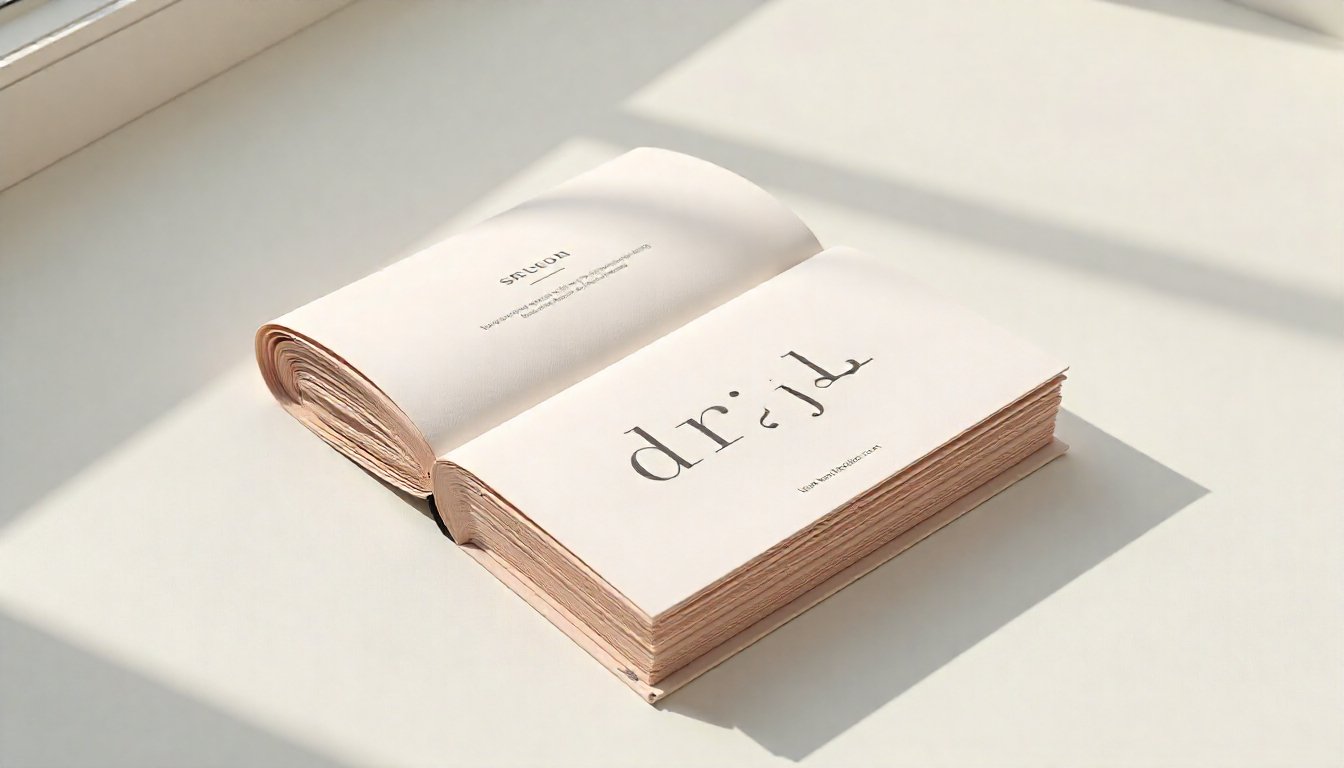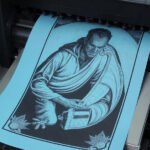
- comelyweb@gmail.com
- Online Printing Services
- August 27, 2025
- No Comments
Creating the Perfect Urdu Visiting Card Guide
Table of Contents
ToggleThe Art of Connection: A Complete Guide to Urdu Visiting Card Format
Introduction
In our hyper-digital age, where contact details are exchanged with a tap or a scan, the humble visiting card seems like a relic of a bygone era. But step into a business meeting in Karachi, a professional gathering in Lahore, or a networking event in Dubai, and you’ll witness a timeless ritual: Visiting cardOr as it is known in Urdu, Card (card) or Business card (Business Card).
However, an Urdu visiting card is more than just a piece of paper with a phone number on it. It’s a solid piece of your professional identity, a sign of respect, and a powerful tool for making a lasting first impression. Getting the format right is not just about aesthetics for businesses and professionals who target the vast and vibrant Urdu-speaking population spread across Pakistan, India and the world. It’s about cultural intelligence.
This comprehensive guide will tell you everything you need to know about creating a perfect Urdu business card. We’ll examine essential components, design nuances, cultural etiquette and practical tips to ensure your card opens doors and builds bridges.
Why Urdu Visiting Card still matters?
Before we dive into the “how” let’s understand the “why”. In a culture that deeply values personal relationships (new) and respect (respect), the act of presenting the card carries significant weight. It indicates that you are serious, prepared and respect the person you are engaging with. A well-designed Urdu card shows that you have taken the time to understand and respect the linguistic and cultural context of your audience. It’s a small gesture that quickly says, “I see you, I respect your language, and I’m investing in it.”
Anatomy of a Perfect Urdu Visiting Card.
An effective Urdu business card seamlessly blends essential information with elegant design. While creativity is encouraged, clarity should never be compromised. Here’s a breakdown of the key elements, from least to most important.
1. Basic information: what should be there.
This is non-negotiable data that must be carried on each card.
- your name: This is the center. This should be the most prominent text on the card. Write it in a clear, easy-to-read font. Use your full name as you would use it professionally. For example, Muhammad Imran Khan (Muhammad Imran Khan) Or “Ayesha Siddiqui” (Ayesha Siddiqui)
- Your Title/Position: Clearly define your professional role. This immediately establishes your area of authority and expertise. Examples include: “Managing Director” (Managing Director) “Senior Software Engineer” (Senior Software Engineer), OR “owner” (Owner/Owner).
- Company Name: Display your business or organization name proudly. If your company has a well-known English name (for example, “StarTech Solutions”), you can keep it in English, but adding an Urdu translation or descriptor underneath it can be incredibly effective for local resonance.
- Contact Information:
- Phone Number: Add your direct line or mobile number. Use the local format (for example, +92 XXX XXXXXXX for Pakistan).
- Email Address: Email addresses are usually in English (Roman script), so they will appear on the card in English.
- Address: If your business has a location that clients can see, include it. Listing a well-known area in Urdu can increase trust and local credibility.
- Website and Social Media: In today’s world, your digital footprint is very important. Include your website URL and handles for relevant professional platforms such as LinkedIn.
2. Language format: Navigating in Urdu and English
This is the unique challenge and opportunity of Urdu Card. You have three basic format options:
- Option 1: Only Urdu: This is a powerful choice if your target audience only reads Urdu. It shows a deep level of cultural immersion and respect. This is common for local businesses, educational institutions, and religious organizations.
- Option 2: bilingual form: This is often the most practical and highly recommended method. The card includes both Urdu and English.
- General arrangement: One side is in English and the other side is a correct translation in Urdu. It is clean, functional and caters to a wide audience.
- Integrated Layout: Both languages are on the same side, often English and Urdu lines are placed next to or below each other. This requires careful design to avoid looking cluttered.
- Option 3: English with Urdu Accents: For a more subtle style, your card can be primarily in English but add some Urdu stylistically – for example, use a beautiful Urdu calligraphy font for just your name and title, while keeping the contact details in English.
3. Design and aesthetic elements
Design should complement the language, not fight it.
- Font selection: Urdu has very beautiful typefaces. Nastaliq The most beloved and authoritative is the script, known for its flowing, cursive beauty. However, reading at very small sizes can be difficult. annihilated There is a clearer, more blocky script that offers better readability for small text. Choose a font that’s legible and reflects your brand’s personality—elegant and traditional or modern and clean.
- Color Scheme: Colors evoke emotions. Green and white are classic, clean and popular. Gold foil on dark blue or maroon can convey luxury and tradition. For a modern firm, a minimal black-on-white design can be very effective. Always make sure there is enough contrast between the text color and the background.
- Image and logo: If your company has a logo, it should stand out. Avoid using busy background images that make complex Urdu text difficult to read. Subtle patterns, Islamic geometric designs, or a tasteful watermark can add character without sacrificing professionalism.
- Paper quality and finish: The feel of the card matters. A weak card can degrade the quality of the message you want to send. Choose thick card stock. Consider finishes like matte, gloss, or even textured paper. Embossing your name or logo, or using spot UV coating, can add a tactile, premium feel that makes your card memorable.
Cultural Manners of Card Exchange in Urdu Speaking Circles
The exchange itself is a ritual. Doing it right is just as important as the card itself.
- Respectfully submitted: Present your card with your right hand or with both hands as a sign of respect. Urdu text should be directed towards the recipient so that they can read it immediately.
- Receive with grace: When someone hands you their card, receive it with your right hand or both hands. Take a moment to actually look at it. Do not pocket it immediately. Reading the card briefly shows that you are genuinely interested.
- Packing order: In a group setting, present your card to the most senior person first. It shows an understanding of hierarchy and respect for age and place.
- Never write on: Avoid writing on someone’s card in their presence. It is considered disrespectful. If you need to note something, do it later.
Common mistakes to avoid
- Poor translation: Using Google Translate for direct, word-for-word translation is a recipe for disaster. This often results in awkward, inaccurate, or even humorous phrases. Always hire a professional local Urdu translator.
- Random design: Trying to fit too much information or too many design elements on a small card. Embrace the white space.
- Low Resolution Urdu Fonts: Using pixelated or poorly rendered Urdu fonts will make your card look cheap and unprofessional. Use high quality vector fonts.
- Old information: It is a universal sin. Double and triple check every digit and letter before printing.
- Ignoring the flipside: The back of your card is valuable real estate. Do not leave it blank. Use it for Urdu translation, a list of key services, or a special offer.
FAQ (Frequently Asked Questions)
Q1: Can I use an online translator for my Urdu text?
A: This is extremely discouraging. Online translators often fail to understand the nuances of the Urdu language, professional terminology and cultural context. A wrong translation can make your business look careless. Investing in a human, professional translator is non-negotiable for a professional image.
Question 2: Which is better for my card: Nastaliq or Nashaq font?
A: It depends on your preferences. Nastaliq The script is traditional, artistic and perfect for names and titles if you have enough space. annihilated Generally more readable for small text such as addresses and phone numbers. Many effective cards use a combination: Nastaliq for name and title and Nasik for details.
Question 3: Should the Urdu side mirror the English side?
A: Not necessary. Remember that Urdu is read from right to left. The alignment of elements should be mirrored towards Urdu to maintain a logical flow for the readers. Your designer should understand this fundamental difference in reading direction.
Q4: Is it OK to put QR code on Urdu visiting card?
A: Of course! A QR code is a great way to bridge the digital worlds. It can save your website, LinkedIn profile, a portfolio, or even your contact details directly to someone’s phone. It’s a modern touch that adds functionality.
Q5: What weight of paper is considered good quality?
A: Look for cardstock between 300 GSM (grams per square meter) and 350 GSM. The weight feels substantial and durable in the hand, giving a sense of quality and importance.
The result
Creating the perfect Urdu business card is an art that combines information, design and cultural awareness. It’s a small but powerful ambassador for your professional self. In a world of moment-to-moment digital interactions, it offers a moment of tangible, respectful connection.
By investing thought in language, respecting design principles, and understanding the etiquette of its exchange, you do more than just share your phone number. You convey respect, build trust, and lay a solid foundation for long-lasting professional relationships. So, the next time you order a batch of cards, remember that you’re not just printing paper. You are creating the key to new opportunities in the rich and rewarding world of Urdu speakers.





